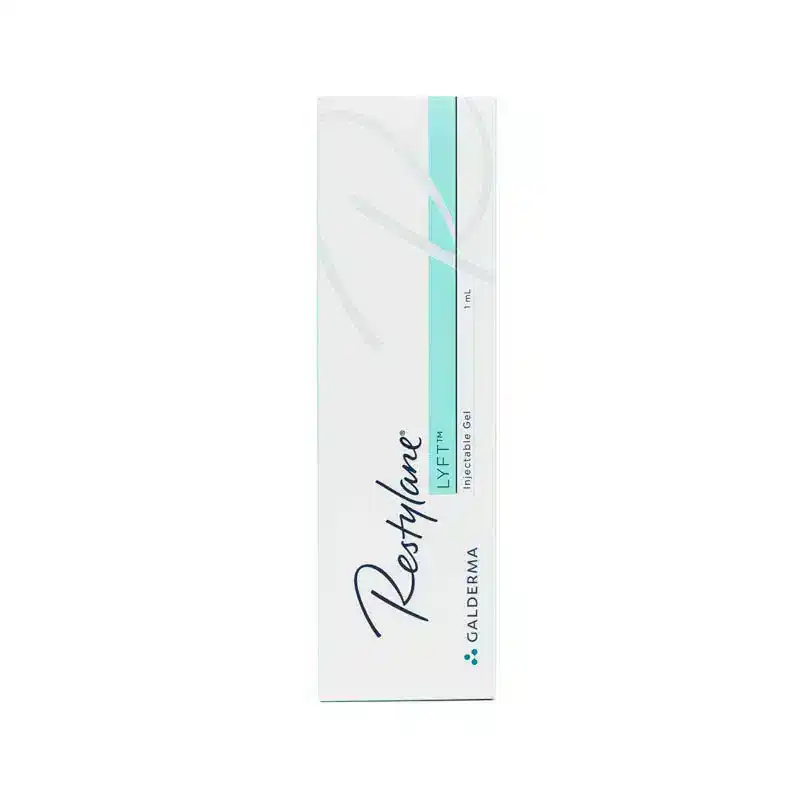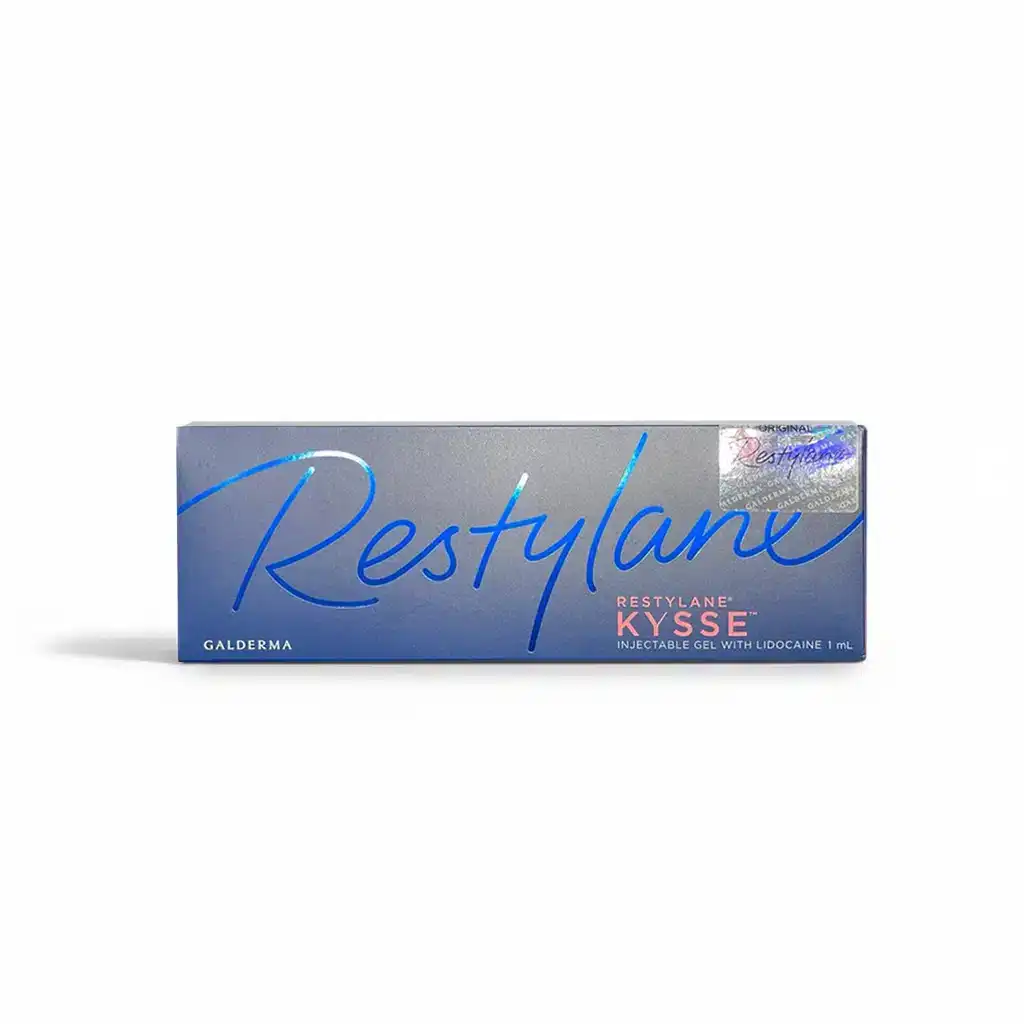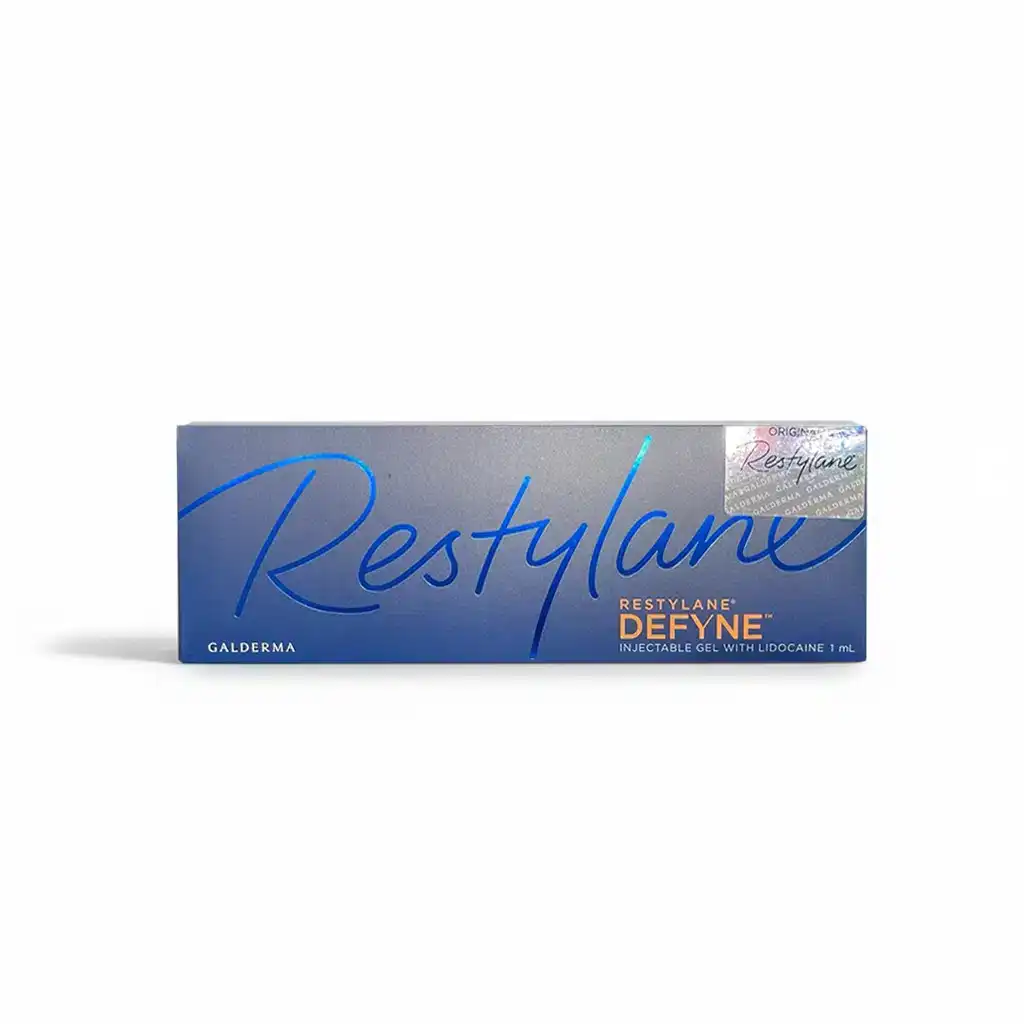Only for Licensed Professionals
Only for Licensed Professionals
.webp)
Radiesse vs Restylane – Which is Suited Best for Which Application?
Nina Petrovic
Last Updated On: August 23, 2025
In today’s world of aesthetic medicine, minimally invasive treatments are more popular than ever. 2023 saw more than 34.9 million cosmetic procedures performed globally, with injectable fillers topping the list for non-surgical facial enhancements.
Two standout options in this space are Radiesse and Restylane. While both are used to restore volume and contour the face, they work in very different ways. Radiesse is made from calcium hydroxylapatite (CaHA) and is known for its biostimulatory properties, including collagen stimulation. On the other hand, Restylane is a hyaluronic acid (HA) filler, prized for its smooth consistency, hydration-boosting effects, and natural-looking results.
So, how do you know which one is right for your needs—or your patients’? In this article, we’ll break down the key differences between Radiesse and Restylane, including their ideal treatment areas, performance characteristics, longevity, and who stands to benefit most from each.
Key Takeaways
- Radiesse is a calcium hydroxylapatite (CaHA) filler that offers immediate volume and collagen stimulation, making it ideal for midface contouring, jawline definition, nasolabial folds, and hand rejuvenation. It typically lasts 12–18 months, with some effects seen up to 24 months.
- Restylane is a hyaluronic acid (HA) filler known for its versatility, hydration benefits, and soft, natural results. It’s well-suited for lips, tear troughs (off-label in the U.S.), fine lines, and subtle facial contouring, with results lasting 6–12 months, or up to 18 months in low-mobility areas.
- Radiesse is not reversible, but provides longer-lasting structure and collagen support.
- Restylane is dissolvable with hyaluronidase, offering greater flexibility, especially for first-time patients or treatments in sensitive areas.
- Both fillers are FDA-approved and safe when injected by qualified professionals. The decision between them should be based on the treatment area, patient anatomy, desired longevity, and comfort with reversibility.
About: Operating since 2016, Med Supply Solutions is known for being one of the industry’s top and trusted suppliers of cosmetic and viscosupplementation products. If you’re looking to buy Restylane online, contact our sales department for more information.
Tier pricing
Save 5.92%
6 or more
$159.00 each
Save 8.88%
11 or more
$154.00 each
Save 11.83%
21 or more
$149.00 each
Tier pricing
Save 5.59%
6 or more
$169.00 each
Save 8.38%
11 or more
$164.00 each
Save 11.17%
21 or more
$159.00 each
Tier pricing
Save 4.78%
6 or more
$199.00 each
Save 7.18%
11 or more
$194.00 each
Save 9.57%
21 or more
$189.00 each
Radiesse Filler: Key Properties and Clinical Applications

Radiesse is a dermal filler composed of calcium hydroxylapatite (CaHA) microspheres suspended in a water-based gel. This unique formulation offers a two-fold benefit: instant volume enhancement and gradual collagen stimulation. Unlike many fillers that simply add volume temporarily, Radiesse encourages the skin’s natural regenerative processes, resulting in longer-term improvements in firmness, elasticity, and facial structure.
Key Applications
- Midface Volume Restoration: Radiesse is particularly effective in restoring volume to the cheeks and temples, two areas that often lose fat and structure with age. Its dense consistency allows for a lifting effect and better contour definition, making it a reliable choice for rebalancing facial proportions and addressing sagging.
- Jawline Contouring: For patients seeking non-surgical facial sculpting, Radiesse can be used to create a more defined jawline. Its ability to hold shape and resist migration ensures clean lines and a structured lower face, contributing to a more youthful overall appearance.
- Nasolabial Folds: These deep creases between the nose and mouth can be softened using Radiesse, which fills in the volume deficit and improves the transition between facial zones, reducing an aged or tired look.
- Hand Rejuvenation: One of the few fillers FDA-approved for hand augmentation, Radiesse restores volume to the dorsal hands, minimizing the appearance of tendons and veins. This helps harmonize the appearance of the hands with the face, creating a more comprehensive aesthetic outcome.
- Collagen Stimulation: Radiesse’s ability to stimulate fibroblasts sets it apart. Over time, this promotes new collagen formation, improving skin texture even after the filler itself is metabolized. However, it’s worth noting that collagen production is gradual, and results may vary based on patient factors and injection site.
Due to its viscous consistency, Radiesse is not suitable for delicate areas like the lips or tear troughs, where fine movements require a more flexible product. Its strength lies in deep volumization, structural enhancement, and long-term rejuvenation, making it a go-to option for patients seeking durable aesthetic outcomes.
Restylane Filler: Unique Features and Common Use Cases

Restylane is part of the globally respected family of hyaluronic acid (HA) fillers, which are widely used in aesthetic medicine due to their versatility, biocompatibility, and safety profile. HA is a naturally occurring substance in the skin, known for retaining moisture and contributing to skin elasticity and hydration.
Common Applications
- Lip Augmentation: Clinicians frequently select Restylane for lip enhancement due to its smooth texture and malleability. It provides natural-looking volume, refines lip borders, and improves symmetry while maintaining a soft, kissable feel.
- Tear Trough Correction: Though off-label in the U.S., experienced injectors commonly use Restylane to treat the under-eye hollows. Its fine consistency allows for careful placement in this delicate area, helping to reduce dark circles and sunken shadows, offering a more rested and youthful look.
- Fine Line Reduction: Formulations within the Restylane range work well to smooth perioral lines, crow’s feet, and forehead wrinkles. Their integration into superficial dermal layers allows for natural softening without causing stiffness.
- Facial Contouring: Restylane can enhance the chin, cheeks, and nasolabial folds subtly. The result is a balanced definition and proportional volume that refreshes the face without overcorrection.
- Skin Hydration: Certain Restylane formulations (e.g., Skinboosters, Refyne, and Kysse) deliver meaningful improvements in skin hydration, glow, and elasticity. These are especially valuable for patients aiming for overall skin quality enhancement, not just volume correction.
Thanks to its soft consistency and reversibility with hyaluronidase, Restylane is a favored choice for delicate areas where precision, safety, and a subtle touch are critical.
Radiesse vs Restylane Longevity and Safety Considerations
When comparing Radiesse vs Restylane, one of the biggest considerations is how long each product lasts, and how adjustable each treatment is after injection.
| Aspect | Radiesse | Restylane |
| Longevity | Results often last 12–18 months, with some reports noting up to 24 months depending on area and patient factors. | Generally lasts 6–12 months, with some formulations persisting up to 18 months in low-mobility areas like the tear trough. |
| Reversibility | Not dissolvable. Adjustments can only be made over time as the product is metabolized. | Fully reversible with hyaluronidase, offering more flexibility for corrections or changes. |
| Safety Profile | May cause temporary swelling, bruising, or tenderness. Rare complications are harder to reverse. | Also associated with mild swelling and bruising, but generally considered safer for delicate zones due to reversibility. |
| Best For | Patients seeking long-lasting structure, lift, and collagen stimulation. | Patients looking for customizable, precise treatment with natural movement and hydration benefits. |
Both fillers are FDA-approved, widely used, and safe when administered by trained practitioners. Those prioritizing flexibility may prefer Restylane, while individuals wanting longer-lasting lift and collagen support often lean toward Radiesse.
A similar comparison exists in the debate of Sculptra vs Restylane, where the choice depends on treatment goals, longevity expectations, and skin quality considerations.
How Practitioners Choose Between Radiesse and Restylane
Selecting the right filler isn’t about which product is “better,” but rather which works better in the specific treatment area, desired effect, and patient profile.
- For structural enhancements (cheek lifts, chin projection, or jawline sculpting): Radiesse offers the density and durability needed for visible results.
- For delicate zones (like the lips, tear troughs, or fine lines): Restylane works best because of its softness and predictability.
Additionally, treatment longevity and reversibility are key decision-making factors. Radiesse’s effects may last up to 24 months in some cases, while Restylane’s shorter duration is balanced by the ability to modify or dissolve the treatment. This is especially reassuring for first-time patients or those seeking minor refinements.
Skin type also plays a role: Restylane blends seamlessly into thin, mobile skin, while Radiesse offers more support in thicker or aging skin. Cost, maintenance frequency, and personal preference round out the considerations practitioners evaluate during consultation.
Conclusion
The choice between Radiesse and Restylane depends on the treatment area, patient goals, and desired longevity. Radiesse is ideal for those seeking structure, lift, and collagen stimulation, especially in areas like the cheeks, jawline, and hands. Restylane, with its soft texture, hydration benefits, and reversibility, can work better for delicate areas such as the lips, tear troughs, and fine lines.
Both fillers are safe, FDA-approved, and effective when used by experienced practitioners. With the right product and placement, patients can achieve natural, lasting results tailored to their needs.
FAQs
1. Which lasts longer, Radiesse or Restylane?
Radiesse typically lasts 12–18 months due to its collagen-stimulating properties, while Restylane lasts 6–12 months depending on the treatment area and formulation.
2. Can patients get a combination treatment of Radiesse and Restylane?
Yes. In some cases, practitioners combine them strategically—using Restylane for delicate areas like lips or under-eyes, and Radiesse for structural support in cheeks or jawlines.
3. Is one filler safer than the other?
Both fillers have FDA approval, and experts consider them safe. Restylane is reversible with hyaluronidase, while Radiesse is not dissolvable but does not cause severe reactions as long as a trained healthcare professional administers the treatment.
4. How do Radiesse vs Restylane compare to other fillers?
Compared to other options, Radiesse and Restylane differ in texture, duration, and ideal applications. The best filler depends on the treatment area, skin type, and patient goals.
References
Global Survey 2023: full report and press releases. ISAPS. https://www.isaps.org/discover/about-isaps/global-statistics/global-survey-2023-full-report-and-press-releases/
Aguilera SB, McCarthy A, Khalifian S, Lorenc ZP, Goldie K, Chernoff WG. The Role of Calcium Hydroxylapatite (Radiesse) as a Regenerative Aesthetic Treatment: A Narrative Review. Aesthet Surg J. 2023;43(10):1063-1090. doi:10.1093/asj/sjad173
Restylane: Uses, dosage, side effects. Drugs.com. https://www.drugs.com/restylane.html
Products
Cart
Log In
Newsletter
Subscribe for exclusive offers and updates on new arrivals
Share feedback at:
Working Hours
MON - SUN 9AM to 6PM EST
The Most Popular Brands
Med Supply Solutions
Support
Secure checkout is guaranteed with full adherence to PCI DSS payment standards.
Products listed here are guaranteed authentic and manufacturer-sourced.
Pay easily with trusted providers


*Google and Apple Pay are currently only available via a direct link provided by your account manager.
Copyright 2025. Med Supply Solutions


